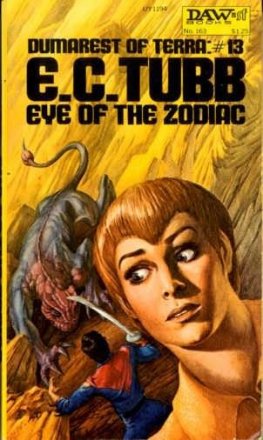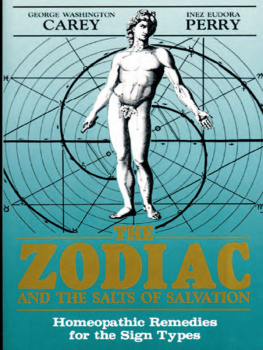JEREMIAS DREXELS CHRISTIAN ZODIAC
Jeremias Drexels Christian Zodiac
Seventeenth-Century Publishing Sensation. A Critical Edition, Translated and with an Introduction & Notes
NICHOLAS J. CROWE
Centre for Medieval & Renaissance Studies, Oxford, UK
First published 2013 by Ashgate Publishing
Published 2016 by Routledge
2 Park Square, Milton Park, Abingdon, Oxon OX14 4RN
711 Third Avenue, New York, NY 10017, USA
Routledge is an imprint of the Taylor & Francis Group, an informa business
Copyright 2013 Nicholas J. Crowe.
Nicholas J. Crowe has asserted his right under the Copyright, Designs and Patents Act, 1988, to be identified as the author and translator of this work.
All rights reserved. No part of this book may be reprinted or reproduced or utilised in any form or by any electronic, mechanical, or other means, now known or hereafter invented, including photocopying and recording, or in any information storage or retrieval system, without permission in writing from the publishers.
Notice:
Product or corporate names may be trademarks or registered trademarks, and are used only for identification and explanation without intent to infringe.
British Library Cataloguing in Publication Data
Drexel, Jeremias, 1581-1638.
Jeremias Drexels Christian Zodiac : seventeenth-century
publishing sensation : a critical edition.
1. PredestinationEarly works to 1800.
I. Title II. Crowe, Nicholas J.
234.9-dc23
Library of Congress Cataloging-in-Publication Data
Drexel, Jeremias, 1581-1638.
[Zodiacus Christianus locupletatus. English]
Jeremias Drexels Christian zodiac : seventeenth-century publishing sensation : a critical edition
/ translated and with an introduction & notes by Nicholas J. Crowe.
p. cm.
Includes bibliographical references and index.
ISBN 978-1-4094-5212-6 (hardcover) ISBN 978-1-4094-5213-3 (ebook) 1. Predestination
Early works to 1800. 2. Catholic ChurchDoctrinesEarly works to 1800. I. Crowe, Nicholas
J. II. Title. III. Title: Christian zodiac.
BT810.3.D74 2013
252.02--dc23
ISBN 978-1-409-45212-6 (hbk)
Contents
Acknowledgements
This volume owes its inspiration to Drs John and Sandra Feneley, co-founders of the Centre for Medieval & Renaissance Studies, Oxford. My gratitude goes to them and to that inestimable institution.
The original 1622 copy of Drexels Zodiacus on which I based this scholarly edition and whose text I translated is housed in the Feneley Library at CMRS, and I am grateful to the Drs Feneley for allowing me access to it during the period of that work. All images are gratefully reproduced courtesy of the Bayerische Staatsbibliothek.
It was their encouragement and support which first generated, then fostered the fascination with Drexel and his writings that has culminated in this volume, in hopes that after several centuries those writings will become available once more to a wide readership.
Oxford, January 2013
Introduction
Jeremias Drexel and the Christian Zodiac
I
The case of Jeremias Drexel (15811638) is arresting on a number of levels. The life, works and circumstances of his extraordinary success as a preacher, professor, rhetorician and author combine to distinguish him as a uniquely intriguing figure in the cultural and intellectual ambience of seventeenth-century Europe. Born to Lutheran parents, he converted to Catholicism as a pupil at his Jesuit school, St Salvator in Augsburg, proceeding in due course to study philosophy and theology at Ingolstadt. Thereafter trained by the Society of Jesus, he became a novice in 1598 and a priest in 1610, saying his first mass in the monastery church of the Jesuits in Munich St Michaels at which moment his career as a preacher and orator began its striking ascent. Early public distinction in the art of allusive rhetoric, and a gift for energizing listeners, drew wider attention and in 1615 Drexel was appointed Hofprediger (court preacher) at the court in Munich of Prince Maximilian I (Elector of Bavaria in the Holy Roman Empire), where he remained until his death 23 years later. His exemplary command of oratory, in concert with an apparently awe-inspiring scholarly reach, is in plentiful evidence in some 34 principal publications, informed as they are not merely with the substance, but driven too by the brio and drama of his pulpit performances. These publications were invariably illustrated with emblematic engravings, and commanded an increasingly extensive readership with each passing year, notably appealing to Protestants as well as Catholics, appearing in multiple reprints, re-editions and translations across Europe during Drexels lifetime and posthumously across the rest of the seventeenth century in an astonishing arc of popularity. The orbit of his readers catchment was geographically and denominationally wide to a conspicuous degree. Drexel was among the most-read authors of that century, a genuine luminary in the culture of the German Baroque, and arguably the most published author of the period tout court. This, then, is already a compelling phenomenon: Drexel clearly possessed all that was required of a bestselling writer in his time a fact of immediate significance. Today, he is not only no longer a bestseller, he has been almost universally glossed over, if mentioned at all, even in detailed discussions of the literary, theological or cultural environment in which he rose to such resounding prominence. His was a career authentically meteoric in both senses brilliance preceding sudden obscurity and so when we weigh the causes of
Drexel, the indefatigable Jesuit, The primary intent, to re-acquaint his readers with the eternal verities in order to point up the significance of these holy truths to all aspects of their lives, was achieved by means of a winning marriage of grandiloquently freighted text and the emblematic engravings which accompanied it. As we shall see, his relationship with Raphael Sadeler the Elder (and in later years with Sadelers three sons) was in this regard exceptionally fruitful.
There is some dispute about the identification of Drexels first published work, and about the dating of a number of his shorter or less substantial pieces of writing, although the chronology of the principal works is now secure.
Drexels pattern was to allow permission for and in a number of cases directly commission a German translation almost as soon as his original text had been completed. As a recent commentator notes, this was a slightly peculiar practice, in that the Latin works were themselves usually the distillation of sermons originally delivered in the vernacular: German orations becoming Latin texts becoming German translations. It also adverts to an appreciation of his resonant way of purveying what had to be said, to his linguistic and oratorical texture, as well as to the appearance and format of the printed works themselves. We are, here, in the presence of a singularly important former of opinion in the field of popular religion, someone to whom the ordinary populace as well as patricians at court could safely look as a mentor.
The Zodiacus christianus, in its rudimentary 1618 form (transcribed Lenten sermons) as well as the editio princeps of 1622, is characteristic of Drexels work in its use of engraved emblematic illustrations, here as invariably provided by Raphael Sadeler I.









